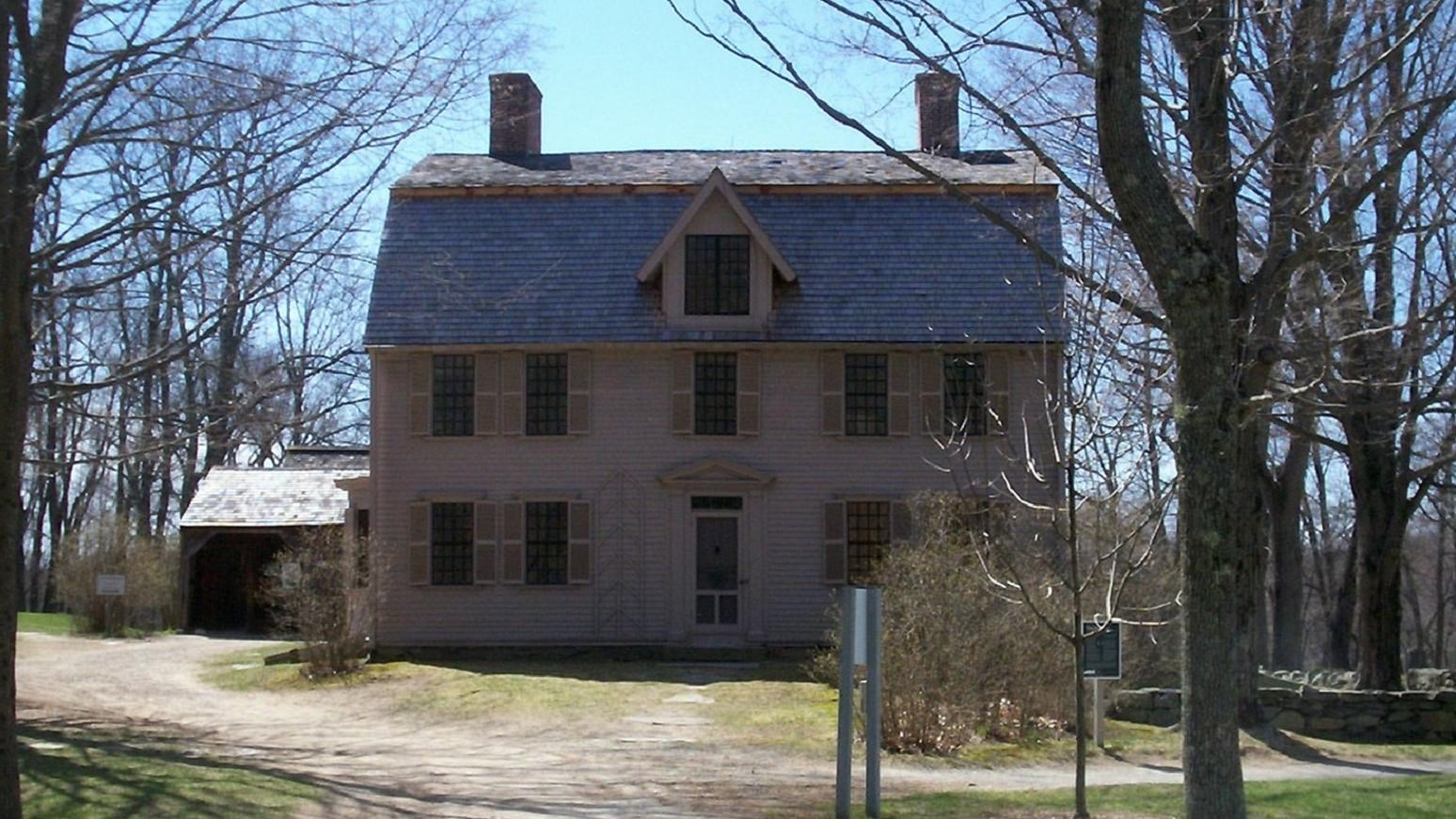Last updated: September 12, 2021
Place
The Old Manse

Photo by Midnightdreary, CC BY-SA 3.0, https://commons.wikimedia.org/w/index.php?curid=6591364
The Old Manse has stood witness to momentous events that helped shape the American character; from the first shots of the American Revolution on April 19, 1775 to the literary revolution of the mid-19th century. It was home to revolutionaries and to writers, such as Ralph Waldo Emerson and Nathaniel Hawthorne, as well as to many remarkable women, such as Sarah Alden Bradford Ripley, who blazed a path for revolutions to come.
The two and one-half story home follows a center hall floor plan. On the north side of the hall are the formal parlor and dining room, while a smaller parlor and kitchen are on the south side of the home. The window panes in the dining room bear inscriptions cut by Hawthorne and his wife with her diamond ring. The second floor contains bedrooms and at the northwest corner is the study used by both Emerson and Hawthorne.
Reverend William Emerson built The Old Manse in 1769 and it remains relatively unchanged today. In the years leading up to the outbreak of war in 1775, Reverend Emerson inspired his congregation to stand up and resist the the designs of the British Parliament to curtail their rights as Englishmen. In March of 1775 he delivered a firey sermon the Concord minute and militia companies during a muster. "Arise! my injured countrymen! and plead even with the sword, the firelock and the bayonet, plead with your arms the birthright of Englishmen, the dearly-purchased legacy left you by your never-to-be-forgotten Fathers..." Though he preached liberty, Reverend Emerson also enslaved four people at the Old Manse: Cate, Phyllis and her daughter, also named Phyllis, and Frank. On April 19, 1775 Reverend Emerson and his family witnessed the battle at Concord's North Bridge from the second floor windows.
Nature writing in Concord, Massachusetts began at The Old Manse in Concord with Ralph Waldo Emerson’s first draft of Nature, published in 1836. Emerson wrote the first draft of his famous essay in the upstairs study, with its windows overlooking his grandfather’s fields, the Concord River, and the site of the famous North Bridge conflict. Another famous resident, Nathaniel Hawthorne, rented the house from 1842-1845, and lived there with his bride Sophia Peabody Hawthorne.
Because Ralph Waldo Emerson penned the first draft of his groundbreaking short book, Nature, from The Old Manse study, this is the birthplace of the American Transcendentalism movement. The essay, which laid the foundation of the movement, challenged a new generation to demand their own works, laws, and worship. The small book pinpointed nature as a source of spiritual truth, beauty, and symbol as well as a professional discipline. In the woods free from the stresses of urbanization, Emerson believed individuals restored their faith and reason.
The publication of Nature and several subsequent essays attracted a small group of highly talented men and women to Concord including Henry David Thoreau, Bronson Alcott, Margaret Fuller, and others who formed the leadership of American Transcendentalism. The authors found solace in the natural aesthetic of Concord, exploring local woods and rivers, ideas on nature, social justices, and connections between physical and spiritual realism. They expressed their philosophy in principled actions by writing, giving speeches, and following their own prescriptions.
The American literary movement continued to flourish at The Old Manse with the arrival of Nathaniel Hawthorne, who rented the house with his bride Sophia Peabody Hawthorne. They arrived at The Old Manse on their wedding day, July 9, 1842. Thoreau’s wedding gift to the Hawthornes was a vegetable garden, which Hawthorne described in the preface to Mosses to an Old Manse. Thoreau also described floating past The Old Manse in his first book A Week on the Concord and Merrimac Rivers. Hawthorne made his own contributions to American nature writing in his preface to Mosses from an Old Manse, which lovingly details the pastoral beauty of The Old Manse landscape.
The Old Manse had other connections with the Massachusetts conservation movement. Ornithologist William Brewster, the first president of the Massachusetts Audubon Society, owned a boathouse on the site for two years. Brewster recounted his affiliation with the boathouse in his personal journal where he described the feat of floating the boathouse downstream to a new location in 1892.
In 1939, The Trustees of Reservations purchased The Old Manse along with most of its original furnishings. The Old Manse was designated a National Historic Landmark in the 1960s.
The Old Manse is located at 269 Monument St. Concord, MA. The Old Manse has been designated a National Historic Landmark. The Old Manse offers guided tours, walk-in tours, and pre-booked tours. For more information, visit The Trustees of Reservations The Old Manse website.
To discover more Massachusetts history and culture, visit the Massachusetts Conservation Travel Itinerary website.
